Riihimäki 作者: 来源: 发布时间:2021-10-16
一、所属省或是州,具体位置,人口,面积
Riihimäki (literally "Drying barn hill") is a town and municipality in the south of Finland, about 69 kilometres (43 mi) north of Helsinki and 109 kilometres (68 miles) southeast of Tampere. An important railway junction is located in Riihimäki, railway tracks go to Helsinki, Tampere and Lahti from there. Würth Oy has its Finnish Headquarters and logistics center in Riihimäki. Valio has a major dairy in Herajoki part of Riihimäki. The famous Sako rifles are produced in Riihimäki.
The town is located in the province of Southern Finland and is part of the Tavastia Proper region. The town has a population of 28,731 (31 January 2019) and covers an area of 125.56 square kilometres (48.48 sq mi) of which 4.54 km2 (1.75 sq mi) is water. The population density is 237.41 inhabitants per square kilometre (614.9/sq mi). The municipality is unilingually Finnish.
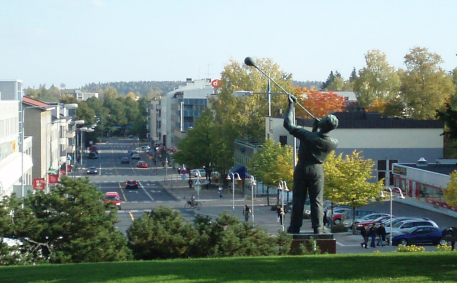
https://www.riihimaki.fi/sv/hem/
二、自然地理
1.地理条件
Scenically, Riihimäki is farmland and lake land. The western part of the city belongs to the Tammela upland region and the eastern part to the agricultural and lake region of Keski-Häme. The relative altitude variation is 30-75 meters and the area is hilly in nature. The highest point is on Hatlamminmäki, which is 165 meters above sea level.
Riihimäki's nature includes forests, bogs and water bodies in many ways. Of the forests, hexagonal, grove-like fabrics are the most common. The share of groves in Riihimäki's forest lands is over 30%. There are also many linden forests and walnut bushes. Among the rocks, a rare rock type, gabro, is widely found in the southern parts of the city.
Call Riihimäki has even more than usual for the conditions in Southern Finland, almost 10%. The zone of the prevailing bog combination types in Riihimäki are shield oases. However, most of the bogs belong to the oasis and only the big Eye- catching shield oasis. Bog types in Riihimäki occurs in diverse bogs, spruce mires and bogs. Hatlamminsuo, located in the northeast corner of the city, near the border of Hausjärvi, has remained the most natural of the bogs.
In the wake of the ice age, Riihimäki has boulders, ridges, ancient shores and soils. The first Salpausselkä also passes through Riihimäki.
There are only about 500 hectares of water bodies in Riihimäki. For the most part, the Riihimäki area belongs to the Vantaanjoki watershed and the northernmost parts to the Kokemäki watershed. The city is crossed in an east-west direction by a national watershed, on top of which the city center is located. The waters of the area are mainly diverted along small ditches and streams. The lakes of Riihimäki are all located in the southern part of the city. The largest lakes are Hirvijärvi, Paalijärvi and Suolijärvi, which extends to Hyvinkää. The smallest lakes are Vatsianjärvi, Arolammi and two Vähäjärvi, one of which flows into Paalijärvi and the other into Hirvijärvi. Vantaa Riverflows in the Riihimäki area for about 13 kilometers. The tributaries of the Vantaa River in Riihimäki are Herajoki and Paalijoki . In the north, the Riihiviidanoja, which belongs to the Kokemäenjoki catchment area, flows into the Punkanjoki River and further along the Puujoki River to the north.
2.交通情况
Riihimäki is along the Finnish main line and the Finnish end of the historic St. Petersburg line. Riihimäki railway station is the northern terminus of commuter trains in the Helsinki metropolitan area. It is still an important junction station, the station even though the number of trains stop there fell Lahti direct line was completed in September 2006. Riihimäki passes through the Helsinki and Tampere between Highway 3 and Hollolan and Tammela between the road 54.
三、经济发展和规模
The municipality’s unemployment rate as of 2018 was 8.5%.
The year 2019 was excellent financially and operationally, considering the tax revenue accumulation decrease of 2.0 mln. EUR 1.7 million to the initial budget and an increase of EUR 1.7 million. compared to the previous years. Riihimäki’s annual margin was MEUR 8.8. EUR 1.8 million. better than the original budget. Riihimäki’s operating expenses exceeded the initial budget by 1.6 million. and an increase on the previous year was only 2.2 percent.
In 2019, the sale of the district heating company's minority stake to Aberdeen Standard Investment was completed. The deal made it possible to repay the loans of our over-indebted city last year for EUR 38.8 million. in euros. The cumulative deficit of the mayor was eliminated. As part of the service network solution, the city several properties will be decommissioned. The district heating trade now makes it possible for them to have an impact on earnings write-downs and possible disposal losses. From the perspective of sustainable preparation for the future, this opportunity is a particularly important issue.
The City of Riihimäki. 2019 Annual Financial Report. https://www.riihimaki.fi/palvelut/konserni-ja-hallintopalvelut/talous-ja-hankinnat/
四、产业特点/重点项目
Riihimäki’s Industry by sector: Service 73.1%, Processing 25.5%, Primary production 0.8%, other 0.6%.
The major employers in Riihimäki are: The city of Riihimäki, VR Group, Defense Forces, Riihimäki garrison, Valio Oy, Consortium of Riihimäki, Regional Health Center, Würth Oy, K-HKS Riihimäki Unit (formerly Riihimäki Regional Hospital), Prisma Riihimäki, Ekokem, Kumera, and Sako.
五、风景名胜,景点( attractions)
1. Finnish Glass Museum
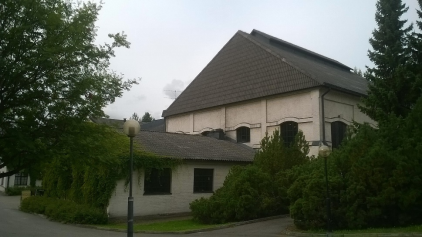
The Finnish Glass Museum was founded in Riihimäki in 1961. The museum collection was based on the basic collection of 500 objects collected by the students of the Hämäläinen Association. Museum of Glass opened in 1965. The museum initially worked v. 1919 built, estate owner Rudolf Gestrin Alli his wife built by Danish manor-style representative Allinna-called building Riihimäki Harju village district. The building was designed by architect Oiva Kallio.
The museum moved to its current location in 1980, where museum exhibitions were designed by Academician Tapio Wirkkala. The museum building was originally built Paloheimo Oy 's turvejauhetehtaaksi in 1914. Riihimäki glass Oy changed the building's glass factory in 1921. The building has also served as. A plastic factory and silk screen printing, as well as last Riihimäki glass kristallihiomo. The current museum café is an old glass factory horse stable. The museum building currently has about 1,700 square meters of exhibition spac. The larger changing exhibition hall used to be a glass factory blower.
In 2005, glass collector Markku Annila sold an extensive collection of 18th and 19th century glassware to the city of Riihimäki for EUR 206,000 and it was placed in the Finnish Glass Museum.
https://www.suomenlasimuseo.fi/museum
2. The Hunting Museum of Finland
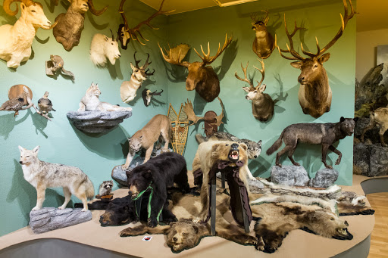
The Hunting Museum of Finland is the leading information center and service institution on its field in Finland. The mission of the museum is to collect, study, preserve, and to display Finnish hunting culture, past and present. The museum operations include a library and an archive serving researchers and public. Every year the museum offers multiple exhibitions and events for local and national audiences.
The Hunting Museum of Finland was founded by the Finnish Hunters’ Association in 1930; however, the museum was not opened until 1972 in Porvoo. In the spring of 1990, the museum moved into a new building built by the city of Riihimäki. The Hunting Museum of Finland Association is responsible for the activities of the museum. Individual members, in addition to national hunting organizations, make up the membership of the association. The activities of the museum are financed primarily by fees collected from game licenses and the funding from Ministry of Education and Culture.
The collections include over 20 000 hunting related artifacts and over 140 000 photographs. The library has probably the widest collection of hunting related books and magazines in Scandinavia. Besides in Finnish, a large amount of books in Swedish and also in English are included in the library collection. The archive holds significant organizational archives such as the Archive of the Finnish Hunters’ Association and the Archive of the Game Preservation Foundation of Finland. The archive also collects files of private hunting clubs and persons.
https://www.metsastysmuseo.fi/english/
3. Riihimäki Art Museum
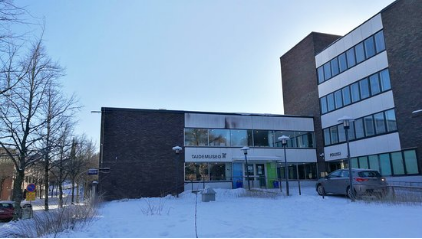
The Riihimäki Art Museum was founded in 1994 and opened to the public on March 26, 1995. It was made possible by Pentti Wähäjärvi (1912–1999), an art and antiques dealer in Helsinki, who donated an extensive art collection to the city of Riihimäki in 1993 with his wife Tatjana Wähäjärvi. The collection bears the name of its donors. The donation collection includes more than 2,000 works. Of these, there are about 1,000 paintings, about 200 sculptures, a total of about 400 graphics, drawings and watercolors, and about 500 antiques.
The frame of the art collection consists of Finnish art, with a special emphasis on the years 1900–1970. A considerable number of works by artists belonging to the November and Septem groups are included. The most important names in the collection are Helene Schjerfbeck, Ellen Thesleff, Tyko Sallinen, Jalmari Ruokokoski, Eero Nelimarkka, Marcus Collin, Wäinö Aaltonen, Kaapo Wirtanen and Unto Koistinen.
The main part of the Riihimäki Art Museum 's Antiques consists of porcelain and ceramic objects. There are Chinese pottery and bronze artefacts from the Han, Tang and Ming dynasties. The collections also include Russian and European porcelain. Production of European porcelain factories comes from several manufacturers, including Rörstrand, Meissen and Sèvres. Pentti Wähäjärvi's donation also includes tin and copper objects, unique works by Arabian artists, iconsand furniture.
https://riihimaentaidemuseo.fi/englanti/
六、历史文化
1.历史
Located in the Riihimäki area Silmäkenevan protected and field area was in the Stone Age more than 10 000 years ago, the lake, which over the Riihimäki region uncovered as a result of an increase in the soil. Several Stone Age settlements have been found on the former shores of the eye-catching ancient lake. Of the more than 20 Stone Age settlements found in Riihimäki, the earliest date back almost 9,000 years.
The earliest permanent residents settled in the Riihimäki region, in the area of Ryttylä village, in the 13th century. On the basis of ocular pollen samples, farming in the surrounding areas would have started in the 15th century at the latest. The villages of Riihimäki, Ryttylä, Kara, Arolampi, Hiivola and Herajoki, are mentioned in tax lists dating back to the 16th century.
In the 18th century, there were crofts in the Kara and Ryttylä manors in the Haapahuhta area. During the 1780s, the cradles of Kuuloja, Huhtimo and Koko were built on the lands of Kara, and in the 19th century the cradles of Talteen and Tienhaara were built. The Juppala croft under the Anttila peasant house was cleared in 1788. The Haapahuhda croft under the Ryttylä croft house was founded in 1794, from which it became an independent farm in 1813. In the early 19th century, the crates of Uramo and Sipusaari and the new farm in Riihiviida were also established.
The position became the first junction position in Finland and therefore an important transit point, when from there to the east leading Riihimäki-Saint Petersburg-track the first leg of the Gulf was opened to traffic on November 1, 1869. At the junction station made a Barn Hill-municipal Hausjärven of the fastest growing urban area. Already in the late 19th century, district councils and tax collections were held in Riihimäki. Gradually, more settlements began to emerge around the station.
Riihimäki gained city rights from the beginning of the 1960s, and from the 1960s onwards, more and more Riihimäki residents traveled to work outside the locality. Suburbs were built in Otsola and Sipusaari, and detached house areas were built in Räätykänmäki, among others. In the 1970s, construction began on the Mattila industrial village and the new residential suburb of Peltosaari. In addition, apartment buildings were built in Ilomäki and the Suojala detached and terraced area. The electrification of the main line extended to Riihimäki until 1972. The number of industrial workers decreased by a third by the 1980s, and the relative share of railway workers also decreased. The majority worked in service industries. Riihimäki Glass ceased operations in 1990. Road traffic connections from Riihimäki to Helsinki and Tampere improved when the motorway, the current highway 3, was completed in the 1990s.
2. 文化体育
Riihimäki has six museums. The Finnish Glass Museum and the Finnish Hunting Museum are located in Riihimäki. The basic collections of the Riihimäki Art Museum include several works by Schjerfbeck. In addition to the professional theater, the city has a youth theater and an amateur theater. The Häme Reserve Orchestra operates in Riihimäki. Other cultural services include city library and annual events.
七、其他信息
There are seven youth soldier organizations in Riihimäki: Monari, Peltsin Club, Jukola Youth Soldier, Petsamo Youth Soldier, Mäkikuja Club Center, Hämeentorn Club Club and Narnia Parish Youth. In addition, there is a Youth Service Point (Nuppi) for young adults, which provides guidance and information for people under the age of 25 in Riihimäki. The City of Riihimäki's youth services organize various events throughout the year. Riihimäki has a youth council, which has the right to attend board meetings. The Youth Council takes a stand on the decisions of the City Council and organizes events for young people.
八、联系方式
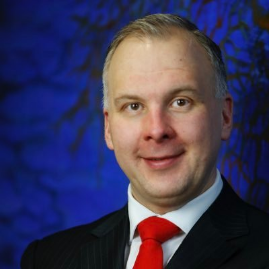
Mayor: Sami Sulkko
Telephone: 019 758 4000
Email addresses: firstname.lastname@riihimaki.fi
https://www.riihimaki.fi/sv/hem/
